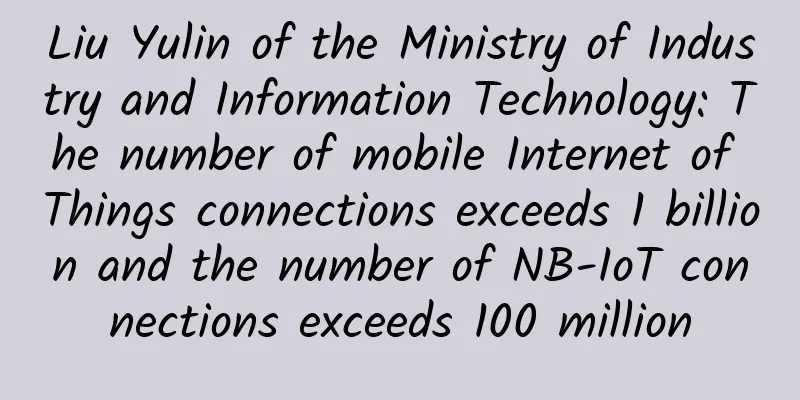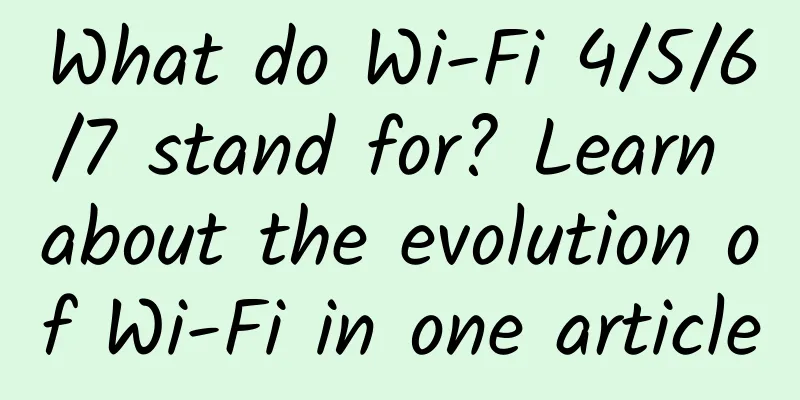Liu Yulin of the Ministry of Industry and Information Technology: The number of mobile Internet of Things connections exceeds 1 billion and the number of NB-IoT connections exceeds 100 million

|
With the support of "new infrastructure", emerging industries such as 5G and the Internet of Things are ushering in major development opportunities. At the 5G NB-IoT Billion Journey Online Industry Summit held recently, Liu Yulin, Deputy Director of the Information and Communications Development Department of the Ministry of Industry and Information Technology, said that the Ministry of Industry and Information Technology has always attached great importance to the development of mobile Internet of Things. In 2017, it issued the "Notice on Comprehensively Promoting the Construction and Development of Mobile Internet of Things NB-IoT", which sounded the clarion call for the rapid development of mobile Internet of Things represented by NB-IoT. By the end of last year, my country had built more than 700,000 NB-IoT base stations, achieving continuous coverage of major cities and townships across the country, laying a good network foundation for the development of various applications.
At present, the number of mobile IoT connections in the entire network exceeds 1 billion, of which NB-IoT has exceeded 100 million after three years of rapid development. The number of connections for typical applications such as smart water meters, smart gas meters, smoke sensors, and electric vehicle monitoring has reached millions or even more than 10 million, and new large-scale applications such as smart street lights, smart parking, and smart door locks are constantly emerging. Liu Yulin pointed out that the new coronavirus outbreak this year has had a great impact on all walks of life and the lives of people across the country. The control requirements to reduce interpersonal contact have enabled the Internet of Things to show its capabilities. A series of products such as long-range thermometers, patrol drones, epidemic prevention robots, and isolation area induction door magnets have been widely used in epidemic prevention and control and resumption of work and production. Liu Yulin also pointed out: "Although the mobile Internet of Things represented by NB-IoT has achieved breakthrough results, it also faces some challenges." First, NB-IoT applications need to be further popularized. Currently, most NB-IoT connections in my country are concentrated in a few cities, and the degree of popularization across the country is still lacking, and a large number of base stations are in a light-load or no-load state. Second, the proportion of advanced mobile technology needs to be further improved. Among the existing IoT connections, 2G and 3G connections still account for a large proportion, and it is necessary to accelerate the formation of a development pattern in which 4G and 5G technologies are used to gradually take over various IoT connections. Third, NB-IoT network coverage needs to be further improved. In some areas, the NB-IoT network coverage level cannot fully meet the requirements for carrying 2G connection migration, and the local coverage depth needs to be strengthened. Liu Yulin also made several suggestions for the development of the mobile Internet of Things industry: First, accelerate the construction of 5G networks and coordinate and improve NB-IoT network coverage. The Internet of Things needs to develop, and the network is the foundation. All basic telecommunications companies should accelerate the deployment of 5G networks, aiming at SA independent networking, accelerate the construction of networks in major cities, and extend coverage to key counties and towns with conditions, laying a good foundation for the development of mobile Internet of Things. In response to the needs of important application scenarios, further improve and optimize the quality of NB-IoT networks, strengthen deep coverage, and strongly support the continued development of various applications. Second, strengthen the construction of IoT management platforms and open capabilities. Telecom companies’ connection management platforms should be connected to vertical industry application management platforms. In particular, operators’ management platforms should open interfaces and capabilities to industry application platforms to help industry customers manage their services more flexibly and conveniently, and maximize the value of NB-IoT networks. Third, give full play to the supporting role of industry alliances and public service platforms to create a good environment for industrial development. Carry out monitoring of the development of mobile Internet of Things, promote and guide the application and industrial development of NB-IoT in various regions, encourage capable large enterprises and units to build open laboratories, provide R&D, testing, verification, etc. for small and medium-sized enterprises, and give birth to more new applications, new models, and new formats of Internet of Things. |
<<: Network | Can 5G’s cool applications be realized?
>>: 5G+edge computing is in the first stage
Recommend
WiFi beginners guide: 4 things you need to know
Gone are the days of firing up our computers, plu...
5G: How businesses can prepare
5G is the marketing term for the fifth generation...
5G Imagination in the Internet of Vehicles Makes Transportation Smarter
[[351620]] 5G is one of the Internet of Things co...
Eight data center technologies verified in 2015
2015 was a year in which new technologies matured...
6 steps to effective real-time monitoring across hybrid IT
For data center operations, it can be difficult t...
1Gbps ultra-high-speed broadband will be available in some cities next year
On December 26, the National Industrial and Infor...
Introduction to VPN technology and commonly used VPN networking methods in enterprises
VPN (Virtual Private Network) refers to the use o...
Interview blitz: Is TCP reliable? Why?
Author | Lei Ge Source | Java interview questions...
RackNerd: San Jose data center VPS promotion starting at $11.88/year
A week ago, we shared RackNerd's promotional ...
What is FlexE in 5G bearer network?
[[413331]] This article is reprinted from the WeC...
Hundreds of unicorns died in 2019: 3 reasons, 5 traps, and a mess
2019 can be called the year of naked swimming for...
Case | A sobering report on a major network failure
December 6, 2018 was a nightmare day for Japanese...
RAKsmart: Popular US VPS starting at $0.99 per month, Hong Kong/Japan VPS starting at $2.99 per month
Last month, the tribe shared information about RA...
PacificRack: $8/month Windows VPS-4GB/60G SSD/30M unlimited/Los Angeles
At the end of last month, I just shared the news ...
Slow Wi-Fi? Want to make it 4 times faster? Try these tips!
In the modern Internet era, the highest productiv...









